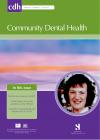Community Dental Health

- Cover Date:
- June 2012
- Print ISSN:
- 0265 539X
- Vol:
- 29
- Issue:
- 2
Effect of national recommendations on the sale of sweet products in the upper level of Finnish comprehensive schools
Interventions: In 2007, the Finnish National Board of Education (FNBE) and the National Public Health Institute (KTL) recommended to schools that they quit regular selling of candies and soft drinks. Objective: The aim of this study was to determine how and why such selling changed from 2007 to 2008 after the national recommendation. Methods: Surveys were conducted using online questionnaires to all upper comprehensive schools in Finland. In 2007, 480 (49%) and in 2008, 507 (51%) schools answered the questionnaire; 319 (32%) schools participated in both studies. Schools were asked whether they sold candies, soft drinks or other sweet products and, if they had changed the selling of these products, why. The changes in selling were analyzed by using McNemar´s test. Results: Of the responding schools, 56% (n=267) and 46% (n=233) sold sweet products in 2007 and 2008, respectively. Of the schools responding both years, 56% reported selling sweet products in 2007 and 50% in 2008. Selling had decreased by 11% among the schools that took part in both studies. The main reasons stated for quitting selling these products were concern about pupils’ health (40%) and the recommendation of the FNBE and KTL (38%). Conclusions: The national recommendation was followed by some decrease in sale of sweet products. For further progress, new actions, both policy measures and broader public involvement, may be needed.
Keywords: health promotion, children, sweets, soft drinks
- Article Price
- £15.00
- Institution Article Price
- £
- Page Start
- 149
- Page End
- 153
- Authors
- R. Kankaanpää, S. Seppänen, A. Hiiri, M. Manninen, P. Puska, S. Lahti
Articles from this issue
- Title
- Pg. Start
- Pg. End
- Dental Public Health in Action - The Platform for Better Oral Health in Europe Report of a New Initiative
- 131
- 133
- Effect of national recommendations on the sale of sweet products in the upper level of Finnish comprehensive schools
- 149
- 153
- A review of strategies to stimulate dental professionals to integrate smoking cessation interventions into primary care
- 154
- 161
- When Can Oral Health Education Begin? Relative effectiveness of three oral health education strategies starting pre-partum
- 161
- 167
- Clinical evaluation of three caries removal approaches in primary teeth: A randomised controlled trial
- 173
- 178
- Relationship between gingivitis severity, caries experience and orthodontic anomalies in 13-15 year-old adolescents in Brno, Czech Republic
- 179
- 183
- Prevalence of necrotizing ulcerative gingivitis and associated factors in Koranic boarding schools in Senegal
- 184
- 187
